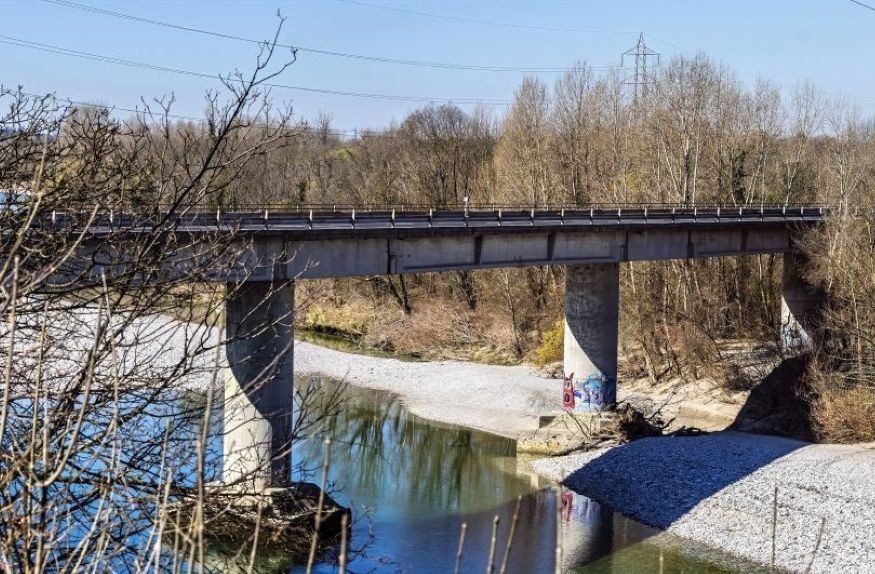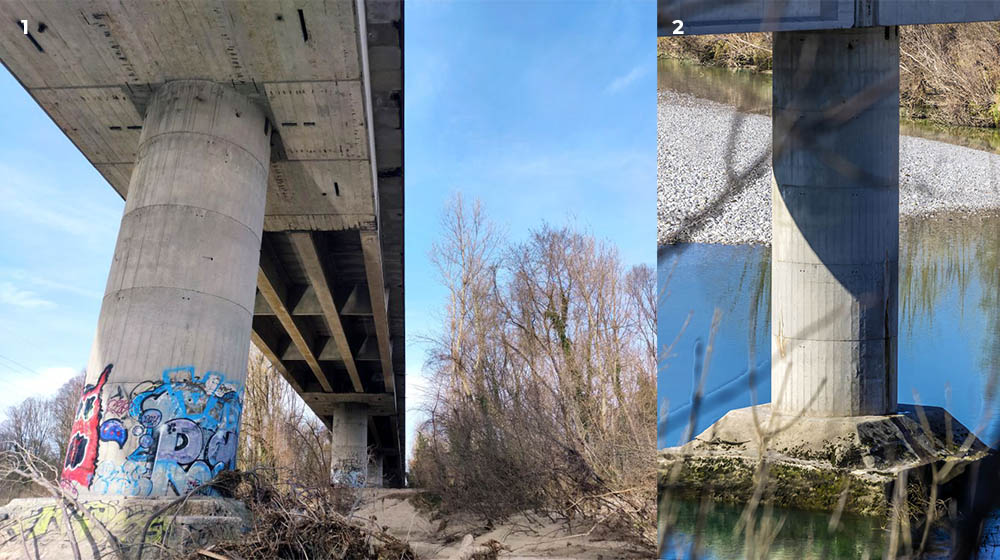gorizia

SR117 Regional Road Bridge
Eros ALLONE
HISTORY
The expansion of Gorizia’s transportation infrastructure in the 1970s led to the development of State Road 56, establishing vital connections between Gorizia and its neighbouring municipalities, including Cormons, Capriva, S. Lorenzo Isontino, Mossa, and Lucinico.This comprehensive infrastructure upgrade incorporated direct access to the city’s industrial district, with the bridge emerging as a critical link when completed between the late 1970s and early 1980s.
Following a decree in the late 1990s that transferred responsibilities from the State to the Regional Government, the SR 117 in the Municipality of Gorizia, including the bridge, came under Regional management.
The bridge traverses an expanse near Gorizia, between a sandstone rock escarpment on its eastern side and an embankment on its western side. Stability assessments were conducted on the bridge following requests for exceptional transport transit in 2019 and 2022.
In 2023, engineers performed thorough inspections to complete a comprehensive seismic risk analysis, providing better insight into the bridge’s structural condition.

Photo by: G. Bartelloni

BRIDGE CONSTRUCTION AND STRUCTURAL ENGINEERING
Spanning approximately 530 metres in length, the viaduct incorporates abutments that seamlessly connect to both river banks and features 15 spans, each measuring between 30 to 40 metres. The 10-metre-wide single roadway accommodates bi-directional traffic with shoulders on either side. The structure’s perimeter is secured by steel guardrails, ensuring safety standards.The 15 deck sections, connected by transverse neoprene joints, consist of reinforced concrete slabs supported by four prestressed concrete double-T beams with pre-tensioned cables that terminate at each support point. The four deck beams are interconnected by four cross beams that divide the span into three equal parts.
The vertical supporting elements (piers) are constructed in reinforced concrete with circular cross-sections and connect to the deck via pier caps and cantilevers. The deck sections are equally distributed between pier caps and cantilevers for support.
The abutments are built with reinforced concrete walls—the eastern abutment rests on a sandstone slope, while the western one extends past the existing embankment.
These vertical elements sit atop footings, with each footing anchored by four ground-driven piles.
BRIDGE CONSTRUCTION AND STRUCTURAL ENGINEERING
Spanning approximately 530 metres in length, the viaduct incorporates abutments that seamlessly connect to both river banks and features 15 spans, each measuring between 30 to 40 metres. The 10-metre-wide single roadway accommodates bi-directional traffic with shoulders on either side. The structure’s perimeter is secured by steel guardrails, ensuring safety standards.The 15 deck sections, connected by transverse neoprene joints, consist of reinforced concrete slabs supported by four prestressed concrete double-T beams with pre-tensioned cables that terminate at each support point. The four deck beams are interconnected by four cross beams that divide the span into three equal parts.
The vertical supporting elements (piers) are constructed in reinforced concrete with circular cross-sections and connect to the deck via pier caps and cantilevers. The deck sections are equally distributed between pier caps and cantilevers for support.
The abutments are built with reinforced concrete walls—the eastern abutment rests on a sandstone slope, while the western one extends past the existing embankment.
These vertical elements sit atop footings, with each footing anchored by four ground-driven piles.

CURRENT STATE AND FUTURE DEVELOPMENTS
Following inspections conducted in 2023 to assess seismic risk, the engineering team evaluated the bridge’s structural integrity and identified necessary maintenance to ensure its ongoing stability.The bridge currently serves as a transportation link with one lane in each direction and a hard shoulder area. The existing road infrastructure meets all current traffic needs, making expansion unnecessary at this time.
Should future demands require operational enhancements, a dedicated study would be needed, potentially leading to deck expansion.

Photo by: E. Allone



